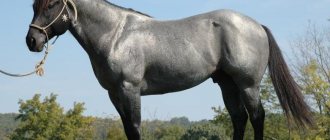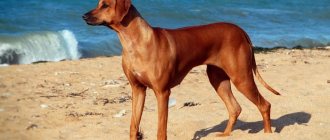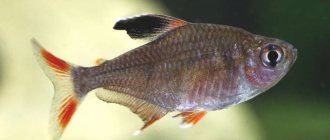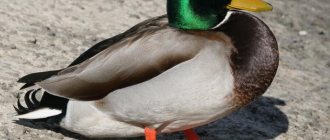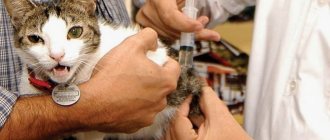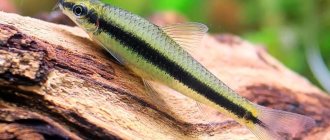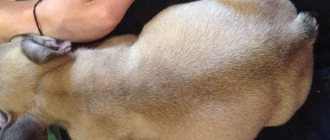Geophagus attracts many cichlid enthusiasts. They are very different in size, color, behavior and spawning. In nature, geophaguses inhabit all types of water bodies in South America; they live both in rivers with strong currents and in standing water, in clear and almost black water, in cold and warm waters. In some of them the temperature at night drops to 10°C!
Given such diversity in the habitat, almost every genus has its own characteristics that distinguish it from other genera.
Geophagus are generally quite large fish, the maximum size is 30 cm, but the average varies between 10 and 12 cm. The Geophagus family consists of the genera: Acarichthys, Biotodoma, Geophagus, Guianacara, Gymnogeophagus, and Satanoperca. In the past it also included the genus Retroculus.
The word Geophagus consists of the Greek root Geo earth and phagus - there is, which can be translated as earth eater.
This word perfectly characterizes fish, since they take soil into their mouths and then release it through their gills, thereby selecting everything edible.
Keeping in an aquarium
The most important thing in keeping geophaguses is the purity of the water and the correct choice of soil. Regular water changes and a powerful filter are necessary to keep the aquarium clean, and sandy soil so that geophaguses can realize their instincts.
Considering that they dig in this soil tirelessly, ensuring the purity of the water is not such an easy task, and an external filter of considerable power is a prerequisite.
However, you still need to look at the specific species living in your aquarium, since not everyone likes strong currents.
For example, geophaguses Biotodoma and Satanoperca live in calm bodies of water and prefer weak currents, while Guianacara, on the contrary, live in streams and rivers with strong currents.
They generally like warm water (except Gymnogeophagus), so a heater is also necessary.
Lighting can be selected depending on the plants, but in general, geophaguses prefer shade. They look best in aquariums that imitate the biotopes of South America.
Snags, branches, fallen leaves, large stones will not only decorate the aquarium, but will also make it comfortable for geophagus. For example, driftwood not only provides shelter for fish, but also releases tannins into the water, making it more acidic and closer to natural parameters.
The same can be said about dry leaves. And in this case the biotope looks simply gorgeous.
Other fish species living in South America will be good neighbors for geophagus. For example, large species of cichlids and catfish (various corydoras and tarakatum).
It is best to keep geophagus in a group of 5 to 15 individuals. In such a flock they feel more confident, more active, they develop their own hierarchy in the flock, and the chances of successful breeding increase significantly.
Separately, it should be said about keeping plants with aquarium fish Geophagus. As you might guess, in an aquarium where the soil is constantly chewed and turbidity rises, it is very difficult for them to survive.
You can plant hard-leaved species, such as anubias or Java moss, or large bushes of echinodorus and cryptocorynes in pots.
However, even large echoes can be undermined and float up, since fish tend to dig in bushes and under the roots of plants.
Care and maintenance
To keep tapajos, an aquarium of 90x40x30 cm is enough if the flock is small. But the optimal size is 120x40x30 cm, and the volume is 140 liters. If there are 12 or more individuals in a flock, then the volume should be at least 250 liters.
Water parameters
Geophagus is unpretentious to water conditions and easily adapts to any water parameters. It is recommended to install:
- temperature 26 - 28°C;
- acidity 5.5 – 7.5 pH;
- hardness 20 – 180 ppm.
It is advisable to create a flow effect in the aquarium, so the fish will feel more comfortable. To saturate the water with air and purify it, a powerful filter and aeration system must be installed.
Lighting
Light intensity is not important for geophaguses. But it is advisable to make the light not too bright so that the fish do not get scared.
Plants
Vegetation may cause problems. It must be taken into account that tapajos dig the soil and can uproot plants. To prevent this from happening, it is recommended to place potted plants in the aquarium. You can also purchase species that can grow on driftwood (for example, Java moss). The fish do not nibble the leaves.
The best option for soil is river sand. You should not put pebbles; fish trying to rummage through them can injure their mouths.
Decor
When setting up an aquarium, create an environment reminiscent of natural habitat conditions. Place driftwood and several large stones.
Feeding
In nature, the diet of geophagus directly depends on its habitat. They mainly eat small insects, fruits that have fallen into the water, and various aquatic larvae.
In the aquarium, they need a lot of fiber and chitin for their gastrointestinal tract to function normally.
In addition to various live and frozen foods, you also need to give vegetable foods - lettuce, spinach, cucumbers, zucchini.
You can also use foods high in fiber, such as Malawian cichlid pellets.
Content
These fish are not too whimsical, but they are still more suitable for experienced aquarists, since they need to be provided with certain conditions for a comfortable life. Actually, the contents of geophagus include:
Aquarium . It is important that it is spacious enough given the size of these pets. Most species grow up to 12 cm, but some species are twice that size. Therefore, it is advisable to purchase a capacity of about 300 liters. This will allow you to have a small flock that will be comfortable swimming, have a place to hide, etc.;
Water parameters . Hardness is secondary and can vary from 6 to 18 dGH, but it is better to keep it higher. Acidity – 6.5-7.5 pH. Temperature is about 24-27 degrees. It is also important that the water is clean. In nature, most species are accustomed to its transparency. In addition, these fish love to rummage in the soil, and it is necessary that there are no deposits of organic matter in it, otherwise the water in the aquarium will be constantly cloudy. Accordingly, it is necessary to ensure regular replacements with high-quality cleaning of the substrate;
Equipment . It needs to be given special attention because, again, the water in the aquarium must be clean. At the same time, the cichlids themselves create a strong biological load. Therefore, a standard internal model with a sponge cannot be used here. The external type is best because it has good performance and can be equipped with a variety of fillers, depending on the aquarist's preferences. Alternatively, you can make your own phyto or biological filter. Both options are quite reliable, but the main thing is to take into account all the nuances so that such cleaning works;
Lighting and decorations . Geophagus itself prefers shade. It looks great in a biotope aquarium, stylized as water bodies of South America. Therefore, you can use large stones, snags, roots and even fallen leaves, which will slightly tint the water and oxidize it, which will also have a positive effect on the well-being of your pets;
Plants . As a rule, aquarists are unable to successfully grow any flora with these cichlids. The only options are large bushes in pots (e.g. Echinodorus, Nymphea, Cryptocorynes) or something with tough leaves like Anubias.
It is worth mentioning separately about the diet of these animals. Under natural conditions, it completely depends on the body of water in which the fish lives. Mostly these cichlids feed on small insects, as well as fruits that have fallen from trees, aquatic larvae, etc. In an aquarium, in order for them to feel good, they need to be provided with a sufficient amount of chitin and fiber, otherwise problems with the gastrointestinal tract may arise.
The menu should include live and frozen food such as tubifex, bloodworms, and brine shrimp. You also need to add vegetation. For example, cucumbers, zucchini, spinach, lettuce. Special dry food from manufacturers is also perfect. These fish eat well the pellets intended for Malawian cichlids.
Description
Geophagus is a large genus, and includes many fish of different shapes and colors. The main difference between the fish is the shape of the head, slightly conical, with high-set eyes.
The body is laterally compressed, powerful, covered with stripes of various colors and shapes. To date, more than 20 species of various geophaguses have been described, and every year this list is replenished with new species.
Members of the family are widespread throughout the Amazon basin (including the Orinoco), where they live in all types of bodies of water.
Species found on sale are usually no more than 12 cm, such as Geophagus sp. red head Tapajos. But there are also fish of 25-30 cm, such as Geophagus altifrons and Geophagus proximus.
They feel best at a temperature of 26-28°C, pH 6.5-8, and hardness from 10 to 20 dGH.
Geophagus broods its eggs in the mouth; one of the parents takes the larvae into the mouth and incubates them for 10-14 days. The fry leave their parents' mouths only after the yolk sac has been completely digested.
After this, they still hide in their mouth in case of danger or at night. Parents stop caring for the fry after a few weeks, usually before the next spawning.
Redhead fish
In nature, red-headed geophagus are found in the Amazon and Tapajos river basins. They have a body elongated in height and laterally compressed, reaching 25 cm in length. The color of the fish is pale silver or golden olive. There are pale transverse stripes on the body, and a rounded black spot in the center. The scales are slightly turquoise, the iris of the eyes is reddish, and the lips are bluish. There are red and black stripes on the fins and tail. The dorsal and anal fins have braids.
The main feature of this species is the red head and forehead. Males are larger than females, their colors are brighter and their fins are longer. Geophagus fish are kept in schools of 6–12 individuals. When kept in a school, conflicts sometimes arise between males - they swim up to each other and make attacking movements, but rarely fight. Earth-eaters get along well with the following neighbors:
- severum;
- uara;
- corridors;
- angelfish;
- peaceful cichlids.
To maintain a flock, an aquarium with a capacity of 250-350 liters is required. If geophagus are kept with other fish, then choose a larger tank . Water must have the following parameters:
- hardness - medium or soft;
- temperature - from 26 to 30 C;
- acidity - from 6 to 7 Ph.
The water in the aquarium is constantly filtered, saturated with oxygen and replaced daily by 30%. River sand is used as soil. The light in the aquarium should be dim. It would be good if there were floating algae in it. You can put driftwood, flat stones at the bottom, or create caves - these will be shelters for fish.
Geophagus are suitable for plant and animal food. They readily eat zucchini, salad, and boiled pumpkin. The fish prefer to feed from the ground. Shrimp and mussels, dry and frozen food are used as a source of protein. Plant foods should predominate in the diet, otherwise the fish may get sick.
Sexual maturity in earth-eaters occurs after a year. They choose their partners themselves from the individuals with whom they grew up. Before spawning, the fish dig a hole and carefully guard it. Both parents care for the eggs. They collect it in their mouth and wear it for 1.5-2 weeks. The fry are released outside and feed on their own. Adults help them find food. The young always stay close to their parents.
Red-headed geophagus
Red-headed geophaguses form a separate group within the genus Geophagus. These include: Geophagus steindachneri, Geophagus crassilabris and Geophagus pellegrini.
They got their name from the fatty bump on the forehead of adult, sexually mature males, which turns red. Moreover, it develops only in dominant males, and during spawning it becomes even larger.
They live in reservoirs with water temperatures from 26° to 30°C, soft or medium hardness, with a pH of 6 - 7. The maximum size is up to 25 cm, but in aquariums they are usually smaller.
These geophagus cannot be kept in pairs, only in harems; their behavior is somewhat similar to the African cichlids from Mbuna. They are very unpretentious and easy to reproduce; the fry are carried in the mouth.
Geophagus Steindachner
How are these funny creatures kept?
Red-headed geophagus
Aquarium geophagus need a fairly large aquarium (its volume should be at least about 300 liters). Why? The fact is that the fish grow up to 15 cm (certain aquarium varieties, for example, Geophagus Suriname or another variety of Geophagus - Balzani, can even grow up to 20 cm).
Taking into account the above-described specific feeding habits of these creatures, it is important that there is coarse sand at the bottom of the aquarium. And since the geophagus will mainly dig the ground, you will need a good filter for the aquarium. You will also need to carefully secure all existing plants and decorations so that aquarium geophaguses do not dig them up.
Aquarium geophaguses are quite diverse, but the majority of existing species can be kept in a general aquarium, provided there is sufficient space. This will allow weaker fish to find shelter when the earth-eaters show unfriendliness. However, most of the fish are quite peaceful and get along well with other fish. So, the red-headed geophagus, for example, relates very well to other peace-loving fish.
The exception is Geophagus brasiliensis, which should be considered very aggressive. It is noteworthy that this aggression also manifests itself towards representatives of its own species.
Surinamese geophaguses
But it is still recommended to keep earth-eaters in species-specific aquariums: in this case, they will independently form pairs. It is desirable that there be more females. We also note that the male Geophagus is very aggressive during the mating season. He can even beat a female to death. For this reason, shelters should be placed in the aquarium. Also, experienced aquarists advise when choosing male fish to look for ones that are younger than females and smaller.
Let us also point out the recommended water parameters for keeping the fish in question:
- temperature at 24-27 degrees;
- hardness – 6-18 degrees;
- pH level – 6.5-7.5.
Brazilian Geophagus
Another group includes geophaguses, named after their habitat in nature - Brazilian. These are species such as: Geophagus iporangensis, Geophagus itapicuruensis, and Geophagus obscurus, Geophagus brasiliensis.
They live in eastern and southwestern Brazil, in reservoirs with strong and weak currents, but mostly with a sandy bottom.
Their body is not as laterally compressed as that of other geophagus, their eyes are smaller, and their mouth is located higher. Males differ quite strongly from females; males are larger, and their heads with a fatty bump are more sloping. Males also have longer fins with a metallic sheen at the edges.
These are quite large fish; for example, Geophagus brasiliensis can grow up to 30 cm.
Brazilian geophaguses live in different conditions. The temperature in them ranges from 16° to 30°C, water hardness from 5 to 15, and pH from 5 to 7.
Aggressive fish, especially during the spawning period. Reproduction is atypical for all geophaguses. The female finds a spot, usually on a rock or tree roots, cleans it and lays up to 1,000 eggs.
The larvae hatch after three to four days, after which the female transfers them to one of the pre-dug holes. So she will hide them until the fry swim. Parents care for the fry for three weeks.
After 6-9 months, the fry reach approximately 10 cm, and can already spawn on their own.
Geophagus brasiliensis
Breeding
Breeding tapajos is a simple undertaking. Sexual maturity in representatives of the species occurs at 8–10 months (in males a little earlier).
Before spawning, the color of the male becomes more saturated. The gentleman drives away all fish, both his own species and others, from the female. To reproduce, the formed pair must be moved to a spawning tank.
The female lays 100–300 eggs. The male fertilizes. The female can leave the eggs lying on the bottom, or she can carry them in her mouth. After 3–4 days, the fry hatch.
Parents take care of the fry, so they do not leave them. The fry constantly stay close to their father and mother; sensing danger, they hide in their mouths. Parents, digging in the ground, obtain food for their offspring.
The fry are fed with plankton and crushed flakes.
Gymneophagus
Gymnogeophagus spp. inhabit the waters of southern Brazil, eastern Paraguay, Uruguay and northern Argentina, including the La Plata basin.
They prefer bodies of water with weak currents and usually avoid large rivers, moving from the main channel to tributaries. They are most often found in bays, tributaries and streams.
In nature, the air temperature in the habitats of gymneophagus fluctuates quite strongly throughout the year, and in some areas it can be 20°C. Temperatures even lower have been recorded, for example 8°C!
To date, dozens of different subspecies of gymneophagus have been described, the most popular among aquarists is the balzani geophagus gymnogeophagus balzanii.
These fish are brightly colored and small in size. Some of them carry eggs in their mouths, others spawn on the substrate.
gymnogeophagus balzanii
Biohouses
Geophagus Biotodoma inhabit calm, slow-flowing areas in the Amazon River. There are two described species: Biotodoma wavrini and Biotodoma cupido.
They live near beaches with a sandy or muddy bottom, periodically swimming into places with stones, leaves or roots. The water temperature is stable and ranges from 27 to 29°C.
Biotodoma wavrini
Biotodomes are characterized by a black vertical stripe running through the gill cover and crossing the eyes.
Also characteristic is a large black dot located on the lateral line. The lips are not fleshy, and the mouth itself is quite small, like for geophagus.
These are small fish, up to 10 cm in length. The ideal parameters for keeping Geophagus biotodome are: pH 5 - 6.5, temperature 28°C (82°F), and GH below 10.
They are very sensitive to nitrate levels in the water, so weekly water changes are necessary.
But, they don’t like strong currents, you need to use a flute if a powerful external filter is installed. Eggs are laid on stones or driftwood.
Biotodoma cupido
Geophagus Steindachner
These earth-eaters, up to 15 cm long, live in the Cauca and Magdalena river basins. They have an olive or brownish coloration, with dark stripes appearing on it during spawning. The dorsal fins have red stripes. All unpaired are brown with yellow spots. The back is curved more than the abdomen. Dominant males have a brown bump on their forehead. During the spawning period it increases and becomes brighter. Females do not have cones; their coloring is more modest.
Geophagus Steindachner are fairly calm fish that get along well with neighbors of a similar size. It is better to keep them in flocks, where there should be more males than females. An aquarium with a minimum volume of 150 liters is suitable for fish. Sandy soil is used. The bottom is decorated with driftwood, grottoes and large stones. Algae are selected with a powerful root system or waterfloating ones. The water parameters are as follows:
- temperature - from 24 to 30º C;
- acidity - 6.5−7 Ph;
- hardness - 5−15 dH.
The fish are given small portions of food several times a day. Geophagus eat plant and animal food: daphnia, bloodworms, larvae, finely chopped vegetables and lettuce. Fish become sexually mature at 8-10 months. Females develop ovipositors, and males become brighter in color. Courtship in fish takes place in a unique way: all day long the male either spreads his tail in front of the female or chases her throughout the aquarium.
From the editor: Black knife - Apteronotus white-fronted
Then the fish calm down and together prepare a platform for spawning. The female immediately takes the released eggs and milk into her mouth. Fertilization also occurs there.
Guianacara
Most Guianacara geophagus spawn in narrow caves and are found in strong currents in southern Venezuela and French Guiana, as well as the Rio Branco region.
In nature, they live in schools, but spawn in pairs. A characteristic feature of their appearance is a black stripe that extends to the lower edge of the gill cover, forming a black angle on the cheek of the fish.
They have a high profile, but there is no fat lump. Currently described: G. geayi, G. oelemariensis, G. owroewefi, G. sphenozona, G. stergiosi, and G. cuyunii.
guianacara stergiosi
Habitat
Originally from South America. It is found in a limited area of the Maroni, Suriname and Saramacca river basins on the territory of the modern states of Suriname and French Guiana.
Inhabits tributaries and main river channels. Prefers regions with slow currents and sandy, silty substrates. It lives mainly in the bottom layer.
Brief information:
- Aquarium volume - from 600 liters.
- Temperature - 22–26°C
- pH value – 4.0–7.0
- Water hardness - 1–10 dGH
- Substrate type - sand
- Lighting - dim
- Brackish water - no
- Water movement is weak
- The size of the fish is up to 30 cm.
- Food - any sinking food
- Temperament - relatively peaceful
- Keep a group of at least 5–8 individuals
Satanperka
The genus Satanoperca consists of such popular species as: S. jurupari, S. leucosticta, S. daemon, and, much less common, S. pappaterra, S. lilith, and S. acuticeps.
Depending on the species, the size of these fish ranges from 10 to 30 cm in length. A common feature for them is the presence of a black round dot at the base.
They live in calm reservoirs in the Orinoco River basin and the upper reaches of the Rio Paraguay, as well as in the Rio Negro and Rio Branco rivers. In the morning they stay close to the shallows, where they dig in silt, clay, fine sand and look for food.
During the day they go to the depths, as they are afraid of birds of prey tracking down prey from the treetops, and at night they move back to the shallows, as the time of predatory catfish comes.
Their constant neighbors are piranhas, so most of the geophagus of the genus caught in nature have damage to the body and fins.
geophagus demon
Some species, such as Satanoperca jurupari and Satanoperca leucosticta, are quite timid cichlids and are best kept with calm species.
They need soft water, up to 10 dGH, and a temperature from 28° to 29°C. Satanoperca daemon are more difficult to keep, they need very soft and acidic water. They often suffer from gastrointestinal inflammation and hole disease.
S. daemon
Appearance
Geophaguses are distinguished by species diversity. Color and size depend on which subclass the individuals belong to. All representatives of this species are united by one specific appearance feature - the presence of a large fatty bump . eyes are located atypically high. The head shape is conical.
The body is slightly compressed at the sides. The main color varies depending on the subspecies of geophagus, of which there are more than 20. But in the aquarium hobby, the following are especially widespread:
- Redheads;
- Brazilian;
- Gymneophagus;
- Bio-houses;
- Guianacara;
- Satanfeather;
- Acarichthys;
- Proximus.
The entire body is covered with stripes of varying lengths, shapes and colors. The size of the fish is usually small: adult specimens reach from 10 to 15 cm. But there are also subspecies of geophagus that can grow up to 30 cm in length.
Acarichthys
The genus Acarichthys consists of only one representative - Acarichthys heckelii. Only about 10 cm long, this fish lives in Rio Negro, Branco, Rupuni, where the water has a pH of about 6, hardness below 10 degrees, and temperatures from 20° to 28°C.
Unlike other geophagus, the Heckeli has a narrow body and a long dorsal fin. Also characteristic is a black spot in the middle of the body and a black vertical line passing through the eyes.
On the dorsal fin, the rays have turned into long, thin threads of bright red color. In mature fish, opalescent spots appear on the gill cover, immediately under the eyes.
The anal and caudal fin are covered with many bright spots, and the body is olive in color. In fact, there are many different colors on sale, but this is certainly one of the most beautiful types of geophagus that are found on sale.
Although Acarychthys Heckel reaches a decent size, it has a small mouth and thin lips. This is a large and aggressive fish, it needs to be kept in a very spacious aquarium, for 5-6 individuals it needs a length of at least 160 cm, a height of 60 cm and a width of at least 70 cm. It can be kept with other large cichlids or geophagus.
In the wild, Heckels spawn in tunnels, up to a meter long, that they dig into the clay bottom. Unfortunately, these geophagus are quite difficult to breed in an amateur aquarium, plus they reach sexual maturity late, females at two years, and males at three.
The lucky ones with a ready-made pair can be advised to place a plastic or ceramic pipe, pot or other object in the aquarium that will imitate a tunnel.
The female lays up to 2000 eggs, and very small ones. The fry are also small, and the starting food for them can be green water and ciliates, then microworms and artemia naupilia.
Usually after two weeks, the parents leave the fry and they need to be removed.
Acarichthys heckelii
Species diversity
Species of earth eaters are quite numerous. So, there are:
- Geophagus yurupari;
- the already mentioned Brazilian geophagus;
- Geophagus suriname;
- Geophagus Steindachner;
- red-headed geophagus (tapajos);
- we note the presence of Geophagus balzani;
- there is also dicrozoster;
- altifrons.
Some of them have become somewhat more widespread, so we will take a closer look at them.
Tapajos
Tapajos or redhead
Tapajos is better known as redhead. This name explains the presence of a red spot on the head of males. Tapajos can change their color depending on the environment, the degree of illumination, and their own mood. This variety is one of the largest: aquarium fish grow up to as much as 18 cm.
Suriname species or Geophagus proximus
Suriname or Proximus
This variety is different:
- the presence of a dark round spot in the middle of the body;
- golden-orange color;
- transverse stripes or spots (bluish and carmine);
- males have elongated outer rays on the caudal fin.
It is noteworthy that in this species the presence of a rigid hierarchy in the flock is very clearly visible.
Geophagus brasiliensis
Brazilian
The Brazilian geophagus differs in color: it varies from gray-yellow to red-brown. The scales have a bluish-green tint.
We have already noted that this species is very aggressive. For this reason, breeding such fish is extremely difficult, since the male, being stronger, furiously pursues the female, who is not ready for spawning.
Geophagus Steindachner
Steindachner
Geophagus Steindachner has an elongated body, slightly flattened on the sides. The back profile of this fish is much more curved than the belly profile. The color of the fish ranges from olive to gray-brown. In some places, golden tints of scales are noted.
Also, Geophagus Steindachner is distinguished by a red border on the caudal and dorsal fins, while the unpaired fins of this underwater inhabitant are brown in color with yellow-brown spots.
Males grow up to 10 cm. They have a fatty growth on the head of a red-brown color. This growth becomes even more saturated with color during the spawning period. As for the females, they have a more modest coloration and no growth. The maximum size of a female is 15 cm.
There are really a lot of species of earth eaters. And they all deserve good treatment from aquarists. Even the Brazilian geophagus, although it is the most aggressive, is quite common. A considerable number of aquarium lovers keep these interesting fish.
